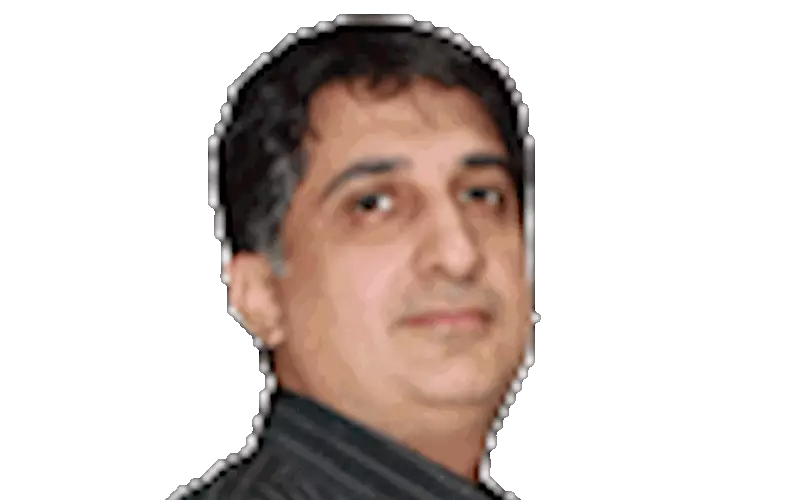Ravi Shroff: "Let's settle the book debate"
Ravi Shroff talks about how he lived his dream of creating the Nutech book project for six years.
04 May 2011 | By Samir Lukka
The Nutech Print Services plant at Faridabad is a dream of mine. A dream I've dreamt for more than six years. It is not just another business venture or factory. Having seen large units in the West and always dreamt of building a unit where I could wander around the plant in a golf cart.
So far I’ve managed to create 1,25,000 sq/ft across three floors – plus surplus land to create another 1,25,000 sq/ft – if the need arises.
I have been fortunate to visit large print companies, overseas. What has impressed me about these units is the emphasis on layout. And while building a new factory, it was the starting point. Everything was built around the workflow.
Nutech is a regular at the London Book Fair (the latest edition in April is our fifth innings) and export accounts for 30% of the turnover. Which is why, the new factory in Faridabad houses a battery of multicolour presses plus soft and hard cover binding lines enough to satisfy the book-hunger of a publisher looking for quality books and volume.
I had a beautiful book dream
Nutech was a commercial printer. We started eyeing book printing in 2004. Books are a complex business. Today, most publishers seek a lower price and ask for higher quality.
Labour and raw material costs are rising; and to stay profitable is tough. The advent of eBooks has complicated the situation. Books can be delivered to the end customer, quicker and cheaper. This might be the greatest challenge for printers in the days to come.
For me, there is only one possible solution to the problem: upscale production and have competitive solutions. We have installed an eight-colour (four over four perfecting press) and two-colour (one over one perfecting press). And so, we are able to print two sides of the sheet at one go. This means faster production time but quicker turnarounds at a lower cost.
Therefore, when a customer says, 2,000 pages of a book has to be printed 4/4 and the requirement is 5,000 copies, we can print and deliver it within a week – without disrupting the schedule of the other projects which has been scheduled on the press at that time.
New rules for competing
The world is a global market and one thing is very clear. "Where you print is no longer a key."
This is because at the moment a printer can print in one place and then ship it around the world. But we are looking to either link up with publishers who have global depots or organise it ourselves. The focus is getting to market quicker and reducing the carbon footprint.
This is what Nutech's dream will achieve. We'll be taking an in-depth look at that financially, environmentally, and from a consumer perspective. Ideally a publisher would be able to drop an order from Boston and we would facilitate it in Faridabad and despatch it to Siberia and Croatia and Finland or any where else that the publisher needs the books to go.
Build our strengths
Academic publishing is important. Textbooks, self-help books and dictionaries. With all the brick and mortar investment, Nutech is taking the administration out of the supply chain. A publisher gets on board and gets the advantage.
Another area of interest is academic colour books. Publishers are looking at how colour comes on in terms of price. If you have a 500-1,000 page book in full-colour then the per page cost is prohibitive. From a quality perspective, for books such as high-quality medical titles, the key is to provide a solution. We intend to.
Academic publishers have embraced colour books. We are gearing up for an avalanche of colour book sales. The bulk of the business is actual books and that is still growing.
2014 might be the tipping point for academic colour books. According to surveys in the emerging markets and in countries in East Europe, Latin America, North Africa, students still prefer real books. And preferably colour books.
Leadership in books
We are continually exploring ways to produce books, which is possible due to our binding requirements – the sizes we print at, and the fact that we require our sections to be sewn or perfect bound. And organise it in the right print formats.
I believe books are not just books, they tend to be momentos. Cost and colour are critical to us and we worry about colour profiling – we tend to work with people who understand that. Our quality expectations are high; even with reprints, we check every running sheet. For example, when we are working on a bestseller project or a Noble award author project, we pay a lot of attention to details.
Innovation is key
We have stuck to a two-month turnaround from order to delivery to the warehouse on book reprints. We're noticing that small and paperback is the common trend. People don’t seem to have room in their bags or book shelves for the library style of ever-lasting book production.
And so, whatever naysayers may say, I believe, books are here to stay; and Nutech is part of the book revolution.
| TOP TIPS FOR BOOK PRINTING |
|
|
|
|
|
|
|
|














 See All
See All